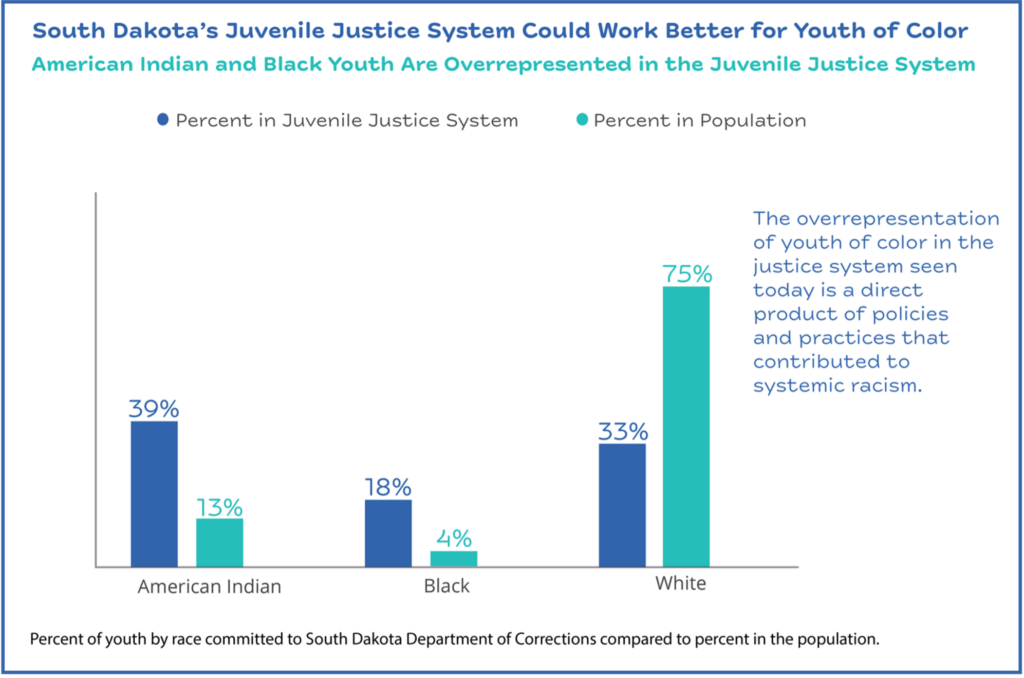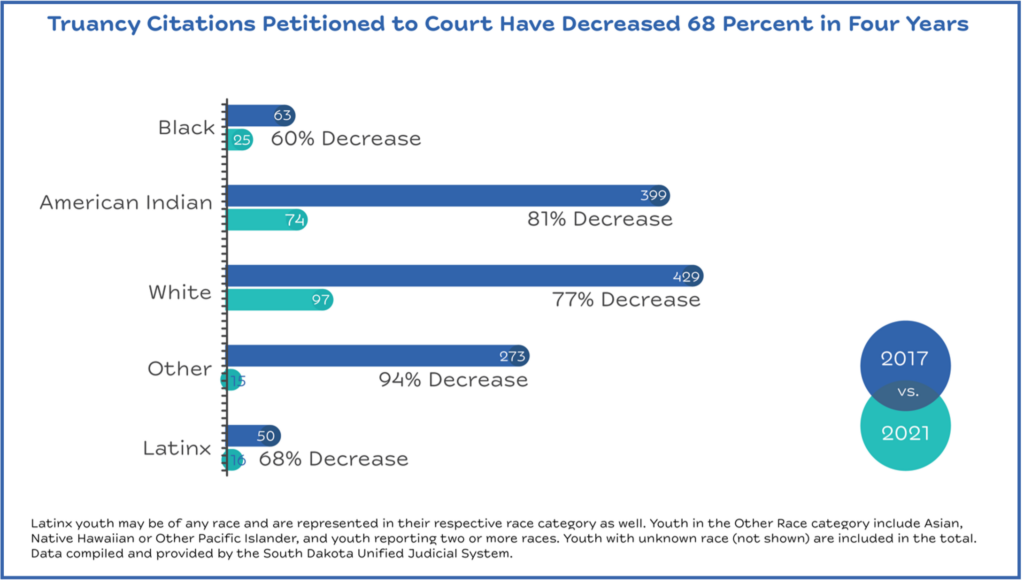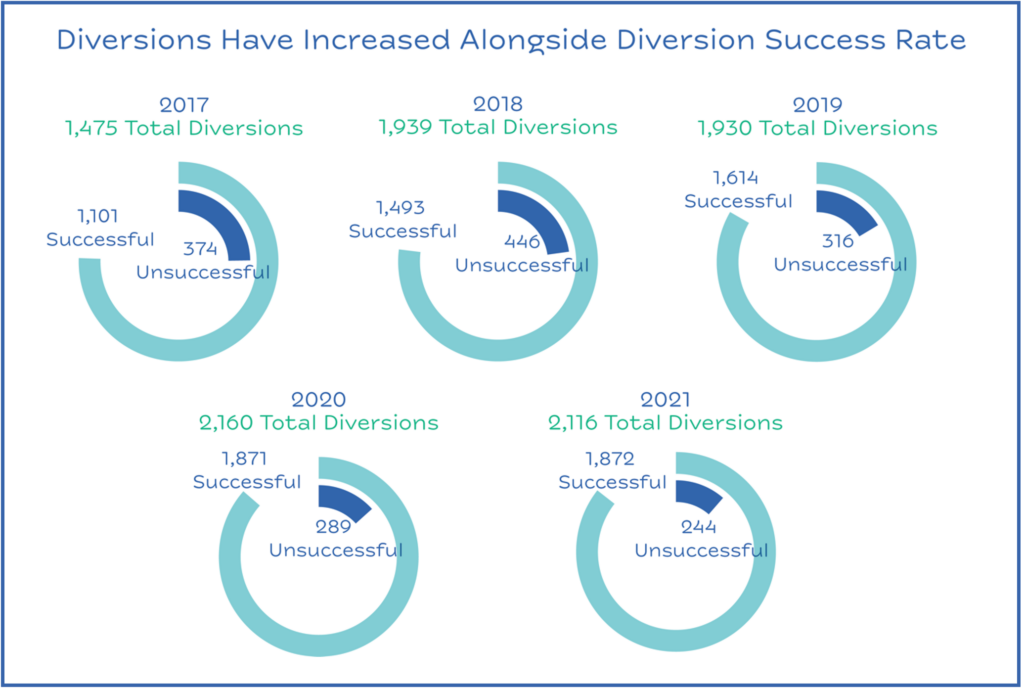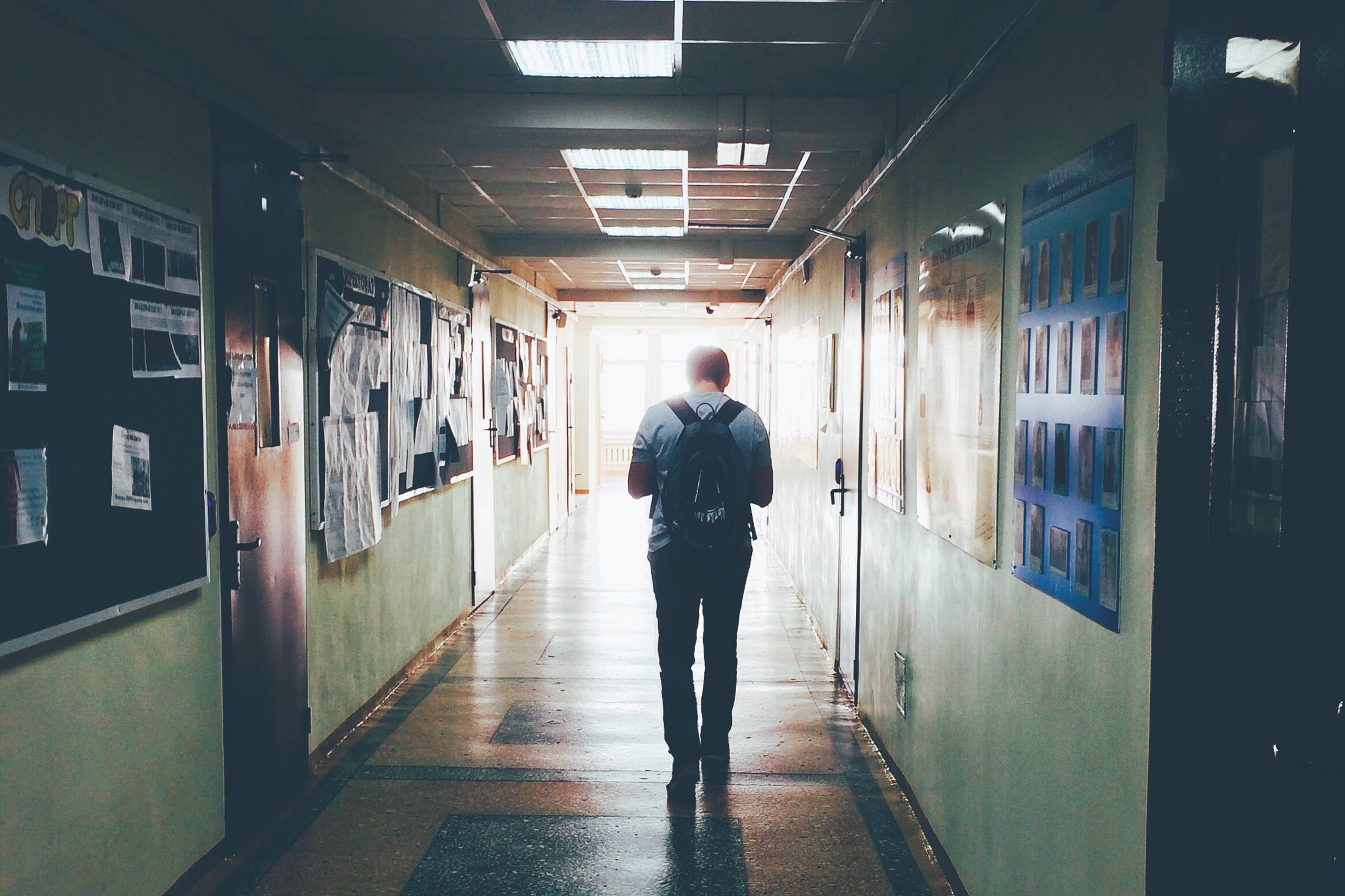South Dakota Needs Continued Support for Juvenile Diversion
January 2022
South Dakota youth should all have the resources and opportunities to thrive in their community. Diversion programs are one way to support youth rather than put them on the road to criminal justice. Instead of imposing punitive measures on youth that have long-term consequences, diversion programs provide services, treatment, and resources they need to get back on track. Youth work with a case manager to develop a plan that can include a service-learning project, a positive community opportunity, or an evidence-based treatment option like functional family therapy or aggression replacement therapy. Juvenile diversion is effective; youth who participate are 45 percent less likely to reoffend than youth going through a formal court process.1
Diversion is available across South Dakota and has been promoted as a resource for communities across the state for six years. In 2021, 29 counties participated in the Diversion Incentive Program through the Department of Corrections.2 Through this program, counties receive an incentive for each youth that successfully completes the program. In South Dakota, seven counties (Brookings, Brown, Codington, Davison, Minnehaha, Pennington, Yankton) also participate in the Juvenile Detention Alternatives Initiative, a set of strategies shown to decrease the overuse of detention and the disproportionate representation of Black, Indigenous, and other youth of color in the justice system.
The State’s Juvenile Justice System Could Improve Outcomes for Youth of Color
American Indian and Black youth in South Dakota are disproportionately represented in the juvenile justice system. More than half (57 percent) of youth committed to the South Dakota Department of Corrections are American Indian or Black, yet these two race groups represent only 17 percent of the total youth population in South Dakota.3, 4 Three out of every four youth admitted to a detention facility were youth of color in Minnehaha and Pennington counties in 2020.5 Unfortunately, youth of color are also less likely to be diverted from juvenile court compared to white youth, further perpetuating their disproportionate involvement with the justice system.1

The overrepresentation of youth of color in the justice system today is a direct result of generations of overpolicing, discrimination, and denied access to social and economic resources. A quarter of students in South Dakota have police presence in their school but no psychologist, nurse, social worker, or counselor.6 American Indian students are four times as likely to be arrested at schools compared to all students.6 The present-day overrepresentation of American Indian youth in the justice system is also a result of the federal government failing to honor its trust and treaty responsibilities, resulting in underfunded social safety net programs in tribal communities.7, 8 For example, chronic underfunding by the federal government of tribal programs like the Indian Health Service means resources for mental health support and youth prevention programs may not be as readily available. As a result, American Indian youth experience higher rates of mental health challenges and trauma. American Indian youth are more likely to seriously consider attempting suicide (42 percent) compared to their peers (30 percent of Latinx youth and 18 percent of white youth).9
Diversions Are Increasing Across South Dakota
Truancy, or when a student is absent from school without an approved excuse, is one of the most common reasons youth are petitioned into court.10 Diversion programs are an effective strategy for addressing these absences and are being used more widely across South Dakota. Youth of color make up more than half (54 percent) of the truancy cases petitioned into court despite only representing 25 percent of the total youth population.11 Truancy citations petitioned into court have decreased 68 percent in the past four years, with a larger decrease for youth of color (84 percent).11 This decrease is likely a result of reform in 2015 from the Juvenile Justice Public Safety Improvement Act that expands the use of diversion and the availability of community-based services to keep youth in their community and connected to resources.12 Instead of attending a formal court hearing, truant youth participate in prevention programs through organizations like the Boys and Girls Club or in culturally based community programs.

Across all offense types, diversions have increased in South Dakota in the past four years.13 In addition to the overall increase, the success rate of diversions has improved. In 2021, 88 percent of youth in diversion programs did not reoffend, compared to 75 percent in 2017. Counties implementing the Juvenile Detention Alternatives Initiative have higher success rates (92 percent) compared to counties without the initiative (73 percent).

Fees and Fines Add Additional Barriers to Families’ Financial Struggles
Involvement in the justice system may also put financial burdens on youth as many young people face various fees and fines as they navigate through the juvenile justice system. In some instances, youth or their families may be charged a fee to participate in a diversion program. Such fees can create insurmountable barriers for families living on limited incomes and pull children deeper into the justice system.
Fees and fines disproportionately impact youth of color and their families, both because of the disproportionate involvement with the juvenile justice system and the generations of denied access to economic resources that result in families of color having less disposable income.14, 15 When youth of color are required to pay a fee to participate in a diversion program, it limits their access to such programs and further exacerbates the problem of disproportionate representation of youth of color in the juvenile justice system.
Solutions Must Center the Needs of Youth of Color
Given the disproportionate representation of youth of color in the juvenile justice system in South Dakota and the reality that youth of color are diverted less frequently, it is essential to work toward models of diversion that are effective for youth of color. There is a need in South Dakota to work with tribal leaders to develop a tribal model for culturally responsive diversion.
A program in Rapid City called I. Am. Legacy, provides culturally responsive programming to divert American Indian youth from court. I. Am. Legacy believes that culture is what heals and offers events that youth can attend that include support groups, shared meals, and space to practice cultural traditions. Oyate Court is another culturally responsive option for youth in Rapid City. Native elders talk with youth about the impact their offense has on themselves, their community, and their people.
The following recommendations will improve the juvenile justice system across South Dakota, provide continued support for implementing diversion programs, and ensure youth have the resources they need to thrive into adulthood.

Footnotes
- The Annie E. Casey Foundation, “What is Diversion in Juvenile Justice?,” Oct. 2020.
- South Dakota Unified Judicial System, “FY 2021 JJRI Fiscal Incentive Diversion Program Submission Summary,” on file with author.
- KIDS COUNT Data Center, “Commitments to SD Department of Corrections by Race in South Dakota,” 2021.
- Missouri Census Data Center, “Population Estimates by Age,” 2020.
- KIDS COUNT Data Center, “Youth admitted into a detention facility by race, for select counties implementing JDAI in South Dakota,” 2020.
- Whitaker, A., et al., “Cops and No Counselors: How the Lack of School Mental Health Staff Is Harming Students,” ACLU, Mar. 2019.
- U.S. Commission on Civil Rights, “Broken Promises: Continuing Federal Funding Shortfall for Native Americans,” Dec. 2018.
- National Congress of American Indians, “Tribal Juvenile Justice Background and Recommendations.”
- Centers for Disease Control and Prevention, “High School YRBS: South Dakota 2019 Results.”
- Juvenile Justice Oversight Council, “2020 Annual Report.”
- South Dakota Unified Judicial System, “State Truancy Petitions,” on file with author.
- National Conference of State Legislatures, “Comprehensive Juvenile Justice Policy Reform: South Dakota,” accessed on Nov. 10, 2021.
- South Dakota Unified Judicial System, “2016-2021 Diversions,” on file with author.
- Debt Free Justice, “The Problem,” accessed on Nov. 30, 2021.
- KIDS COUNT Data Center, “Median family income among households with children by race and ethnicity in South Dakota,” 2019.

